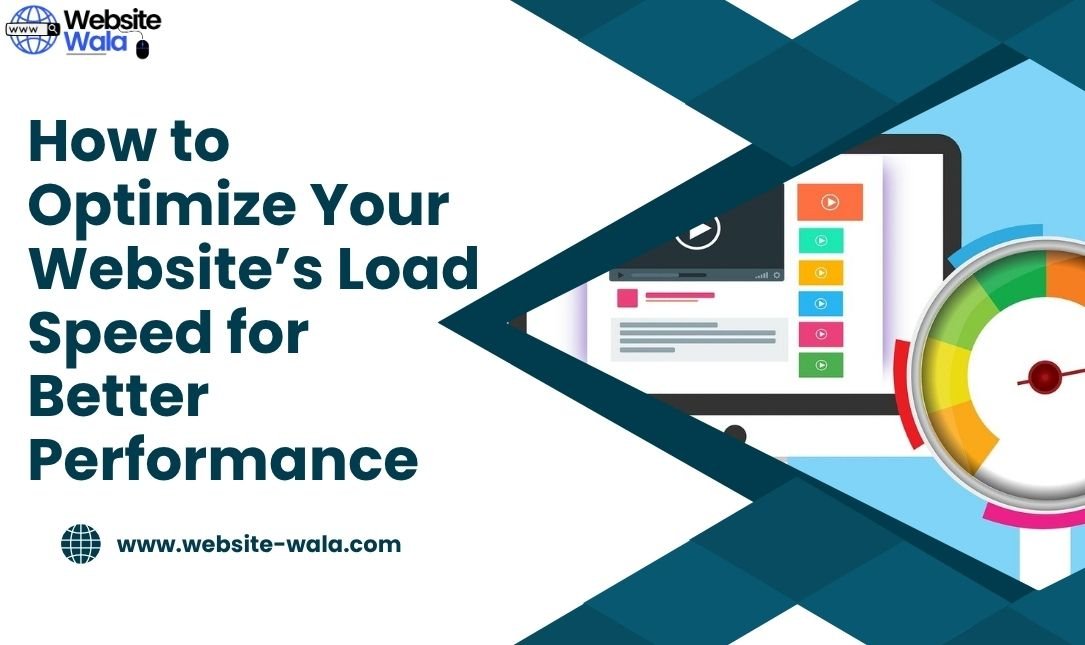
Learn How to Optimize Your Website’s Load Speed for Better Performance to boost website performance, user experience, and faster loading times.
Introduction
In today’s fast-paced digital world, website load speed is critical for retaining visitors, improving search rankings, and enhancing overall user experience. Slow page loading times can frustrate users, increase bounce rates, and negatively impact your website performance. This guide will explain How to Optimize Your Website’s Load Speed for Better Performance, providing actionable strategies for website optimization and ensuring your site runs efficiently.
Why Website Load Speed Matters
Website load speed directly affects user experience. Studies show that users expect a website to load in under three seconds, and even a one-second delay can reduce conversions significantly. Faster sites not only keep visitors engaged but also improve your search engine rankings. Understanding How to Optimize Your Website’s Load Speed for Better Performance is crucial for businesses aiming to maintain a competitive edge online.
Assess Your Current Website Performance
Before implementing improvements, it’s essential to evaluate your site’s current page loading times and server response times. Tools like Google PageSpeed Insights, GTmetrix, and Pingdom provide detailed insights into areas that need attention. By analyzing metrics such as website speed, you can identify slow-loading pages, oversized images, or inefficient code. These insights form the foundation for effective website optimization.
Optimize Your Images
Images optimization is one of the most impactful ways to improve website performance. Large, uncompressed images can drastically increase page loading times. Use formats like WebP or compressed JPEGs to reduce file sizes without compromising quality. Additionally, implement lazy loading so that images are only loaded when they appear in the viewport. This technique not only reduces initial load times but also contributes to overall website speed optimization strategies.
Improve Server Response Times
Your website’s server response times play a vital role in how quickly pages are delivered to users. Choose a reliable hosting provider and consider using a content delivery network (CDN) to serve content from locations closer to your visitors. Optimizing your server setup and leveraging caching mechanisms can significantly reduce latency, ensuring faster loading times across all pages. Understanding How to Optimize Your Website’s Load Speed for Better Performance requires focusing on both server infrastructure and resource management.
Minify and Optimize Code
Code optimization is a crucial step in reducing page loading times. Minify CSS, JavaScript, and HTML files to remove unnecessary characters, spaces, and comments. Implement asynchronous loading for scripts and consider combining multiple CSS or JavaScript files into a single file to reduce HTTP requests. Efficient code optimization ensures that your website runs smoothly, contributing to better website performance and a superior user experience.
Enable Browser Caching
Enabling browser caching allows returning visitors to load your website faster by storing static files locally. By setting expiration dates for resources like images, CSS, and JavaScript, you can reduce the amount of data downloaded during subsequent visits. Browser caching is a simple yet effective method to optimize website load speed and support ongoing website optimization efforts.
Optimize for Mobile Devices
With mobile traffic accounting for a significant portion of internet users, ensuring your website loads quickly on all devices is essential. Implement responsive design and optimize images and code specifically for mobile devices. Mobile website optimization not only enhances user experience but also contributes to better search engine rankings, reflecting the importance of understanding How to Optimize Your Website’s Load Speed for Better Performance across all platforms.
Reduce Redirects and HTTP Requests
Excessive redirects and multiple HTTP requests can slow down your website considerably. Simplify your site structure, minimize redirects, and reduce the number of resources required for each page. Streamlining requests is a key part of website speed optimization strategies and helps improve website performance by reducing unnecessary delays.
Implement Content Delivery Networks (CDNs)
A CDN stores your website’s static content across multiple global servers. When a user accesses your site, content is served from the nearest server, reducing server response times and improving page loading times. Utilizing a CDN is an advanced but highly effective method to optimize website load speed and enhance the overall user experience.
Monitor and Maintain Your Website
Optimizing your website is not a one-time task. Regularly monitor your website performance using analytical tools and conduct audits to ensure your optimizations remain effective. Keep plugins, themes, and scripts updated, and periodically review website speed optimization strategies to maintain faster loading times and optimal website load speed.
Conclusion
Understanding How to Optimize Your Website’s Load Speed for Better Performance is essential for any website owner looking to enhance user experience, improve website performance, and boost search engine rankings. By focusing on images optimization, code optimization, server response times, and implementing modern website speed optimization strategies, you can achieve significant improvements in page loading times. Regular monitoring, maintenance, and website optimization will ensure your site continues to provide a seamless experience for all users, ultimately driving higher engagement and conversions.























